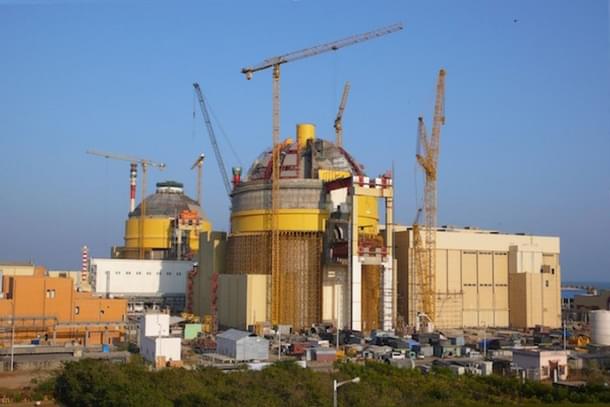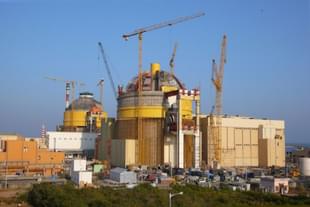Economy
Bharat Small Reactors: NPCIL to Operate India’s New Private Sector-Funded Nuclear Plants
Swarajya Staff
Oct 07, 2024, 12:59 PM | Updated 12:59 PM IST
Save & read from anywhere!
Bookmark stories for easy access on any device or the Swarajya app.


For the first time, the Nuclear Power Corporation of India (NPCIL) is set to operate 220 MW small nuclear power plants for private players, who will be responsible for providing both funding and land for the projects, according to a PTI report.
A senior government official noted that developments in this initiative are expected by the end of this year or early 2025. “The funding and land for the nuclear plant will be made available by the private player but the plant will be managed by NPCIL,” the official confirmed.
The Atomic Energy Act, 1962 (AEA), which is the primary governing statute for the nuclear energy sector, grants exclusive authority to the central government “to produce, develop, use and dispose of atomic energy”.
Since NPCIL, a public sector enterprise under the Department of Atomic Energy, will manage these plants, no amendment to the AEA is required to facilitate private sector participation.
Currently, India is in the process of adapting its 220 MW Pressurised Heavy Water Reactor (PHWR) design into Bharat Small Reactors, with research ongoing at the Bhabha Atomic Research Centre (BARC).
A reactor with an output of less than 300 MW is classified as ‘small’, and these reactors can be more easily deployed closer to their points of use. This is particularly beneficial for industries like steel-making that require captive power generation and are in urgent need of decarbonisation.
Many private players currently operate their own captive power plants, and small reactors could eventually replace these in the future, the report noted.
Budget Push
In her Budget speech for the financial year 2024-25, Finance Minister Nirmala Sitharaman had announced that the Union government will partner with the private sector to establish Bharat Small Reactors and advance research and development of small modular reactors. She did not elaborate further.
Foreign players have expressed interest in building small reactors in India, but their estimated costs, approximately Rs 100 crore per megawatt, are significantly higher than the domestic PHWR technology, which could bring costs down to Rs 16 crore per megawatt.
Additionally, only a few small modular reactors (SMRs) are currently operational worldwide.
The International Atomic Energy Agency (IAEA) reports that there are more than 80 SMR designs and concepts globally, most of which are in various developmental stages and some are claimed as being near-term deployable. Currently, four SMRs are in advanced stages of construction in Argentina, China, and Russia.
SMRs are more cost-effective to construct, making them an attractive option in the market compared to the bespoke, large-scale power plants known for exceeding budgets and missing deadlines.
Additionally, the exclusion zone required for SMRs can be reduced to 500 meters, compared to the 1–1.5 kilometer zones required for larger nuclear power plants. An exclusion zone around the plant is established, which is under the exclusive control of the operating organization, and no public habitation is permitted in the area.
SMRs can also be set up in locations unsuitable for large reactors due to their mobile and agile nature. These small reactors are expected to make a significant contribution to the energy transition, as nations around the world strive to address the effects of climate change.





